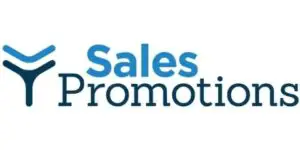Table of Contents
*This post may contain affiliate links. As an Amazon Associate we earn from qualifying purchases.
Social Influence Changing Workplace Etiquette
The word etiquette original definition was focused on behaviors that assists survival. At this simple, primal level it is very different than the code of ‘acceptable’ social behavior, that we associate with the word etiquette today.
Acceptable codes of behavior and etiquette rules change as societies, communities and organizations evolve.

For example, the MeToo Movement, began by bringing attention to sexual harassment in the workplace. Exposing the issue created shock, scandal and the start of rapid workplace awareness and change.
The Gender Pay Gap, and other revelations around salary fairness among coworkers, is being brought to light from increased online access. Information from sites such as Glassdoor, LinkedIn and others increases salary transparency.
In fact, Social media is creating a type of transparency never experienced before. It has given internal and external customers a voice which can effectively hijack your message to either build or destroy your brand.
It’s time to define workplace etiquette as more than simply being polite, showing interest and not speaking about certain subjects.
Embracing the new workplace etiquette requires organizations to incorporate fairness, professional pride and a genuine concern for the greater good of society.
[amazon fields=”1623156882″ value=”thumb” image_size=”large” image_align=”center”]
[amazon fields=”1623156882″ value=”button”]
Breaking Business Etiquette Rules Leads to Failure
I think we can all relate to being treated poorly by a coworker or a supervisor. Before looking at ways employees are inspired, let’s review what defines organizational bad behaviors.
In her book, Contagious Success, Susan Annunzio lists the following behaviors that destroy morale and reduce performance levels:
- Showing disrespect by publicly humiliated, embarrassing or criticizing a co worker or subordinate.
- Hoarding Information by controlling who receives it or burying bad news.
- Micromanaging and treating people small. Dictating every outcome and continually telling people how to do their job.
- Shrinking from responsibility, assume others will pick up the slack, then blame others for mistakes or failures.
- Pursuing a personal agenda by focusing on oneself and never sharing credit.
- Undervaluing learning opportunities by eliminating training or not sharing what you may have learned with others.

We are social animals that respond immediately to to the most subtle demands of our social environment.
Successful leaders understand that changing the workplace environment to eliminate these bad behaviors creates high-performance workgroups where people flourish.
Susan Annunzio also found that ‘workers in high performing groups rate pay/compensation fifth in importance following such things as Values, Teamwork, People and Planning.’
She recommends, ‘If you want to improve performance, start by increasing non-financial recognition.’
Smart organizations recognize these trends and have adapted their employee incentive programs to meet the changing workforce.
Successful Teams Are Created By Unique Individuals
Social influencers are becoming a powerful agent to spark organizational change. Social rewards, social recognition and reciprocity, (exchanging work-life balance perks for higher pay for example), has entered into the mix of motivational incentives to create community and drive innovation.
Regardless of the different types of business, organizational survival depends on incentivizing teams to successfully work together in a rapidly changing business and social environment.
This does not mean that individuals should not be individually incentivized to perform.
Patagonia sporting goods regards their employees as their ultimate customer. To support the brands outdoor adventure lifestyle the organization wants employees to treat their work as play.
They start by hiring passionate and motivated individuals. Then the organization creates an environment that rewards each individual based on their life situation.

Benefits such as 26 three-day weekends, a surfing policy, that also includes exercise time during work hours for non surfers, are just some of the lifestyle incentives people chose from as employees.
Patagonia also offers an unprecedented family benefits policy, which goes beyond great insurance coverage and extensive family leave time.
A daycare center that supports breastfeeding and play visits is part of the supportive culture.
One would think that all play and no work was counter-productive. In actuality, the organizations productivity continually increases. Their employee and customer satisfaction is among the highest in the world.
When an organization builds the right environment, high-performance teams will deliver and excel.
Not every organization can immediately launch the changes Patagonia delivers as every day incentives. The takeaway is to understand that effective incentive programs require a relationship with each individual employee, so they may contribute to the team at high-performance levels.
[amazon fields=”0071811265″ value=”thumb” image_size=”large” image_align=”center”]
[amazon fields=”0071811265″ value=”button”]
Incentives Beyond Benefits and Compensation
Incentive programs traditionally have a theme, a start and end date and a focused communication strategy. While the concept still is valid, the approach to rewards has changed.
On the basic level, the example of the Sales Performance Incentive Fund (SPIF) program identifies a product the organizations wants to push out to the market. When a salesperson sells that item, they are awarded with a bonus or prize.
The incentive reward is based on traditional economics, where the company produces a product and creates a limited reward for selling the product. Is the product really the right fit for a customers needs?

Years ago I was had a sales position selling property and liability insurance to businesses owners. The organization had a monthly SPIF program pushing specific insurance products..
The entire sales team thought the SPIF process was absurd for our business situation. Our goal as field underwriters was to identify the specific risks a prospect faced, and provide insurance coverage to mitigate that risk. Just because our employer gave a prize for selling a particular coverage, it did not change the unique needs of our prospects.
Of course, this SPIF example is not true in all industries, and SPIF’s often serve as a great way to push out product in many commodity organizations.
The lesson I learned from the insurance sales experience was to understand that, in most circumstances, every individual has unique needs. The new rules of workforce etiquette require an organization to consider the needs of individuals vs. the need to push a product out with a one size fits all approach.
Workplace Etiquette Combines Economics With Psychology
Traditional economics is being replaced by behavioral economics. Combining economics with psychology to understand why people make decisions to develop new ways to motivate action.
Money and bonuses are not the driving factor when creating today’s incentive program. Perks that provide Autonomy, Mastery and Purpose inspire and reward people.
The new workplace etiquette instills mutual respect while developing high-performing, motivated employees. In our rapidly changing social and business environment, ongoing communication, cooperation and collaboration builds organizational community and inspires teams to innovate.
[amazon fields=”B00BTM9TGE” value=”thumb” image_size=”large” image_align=”center”]
[amazon fields=”B00BTM9TGE” value=”button”]

